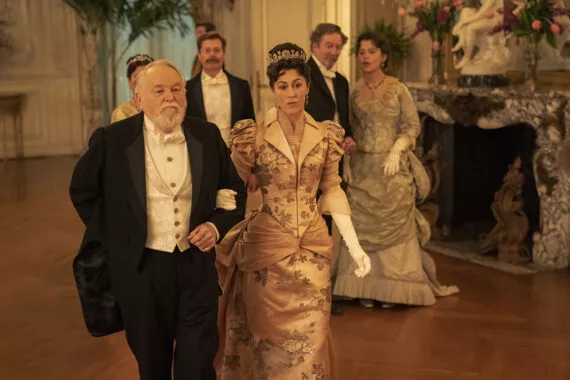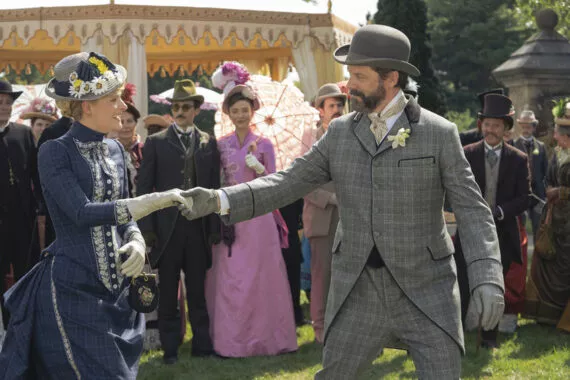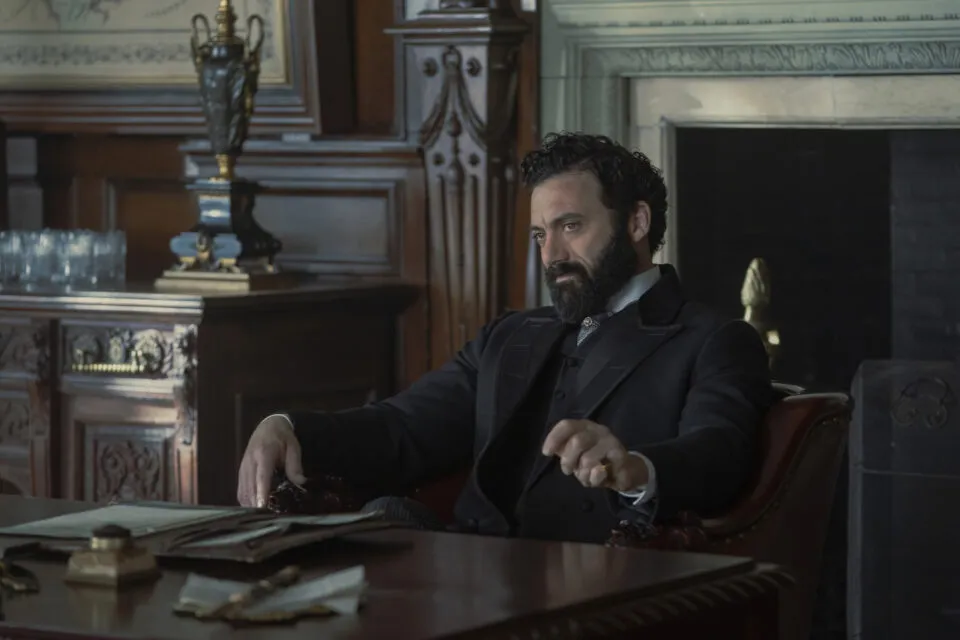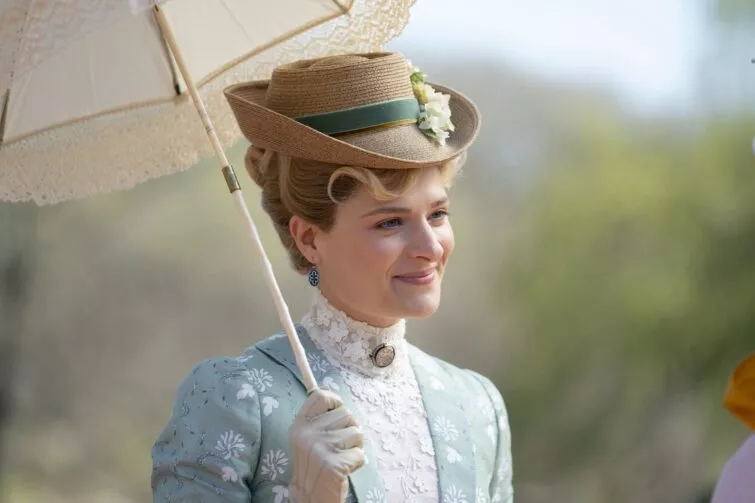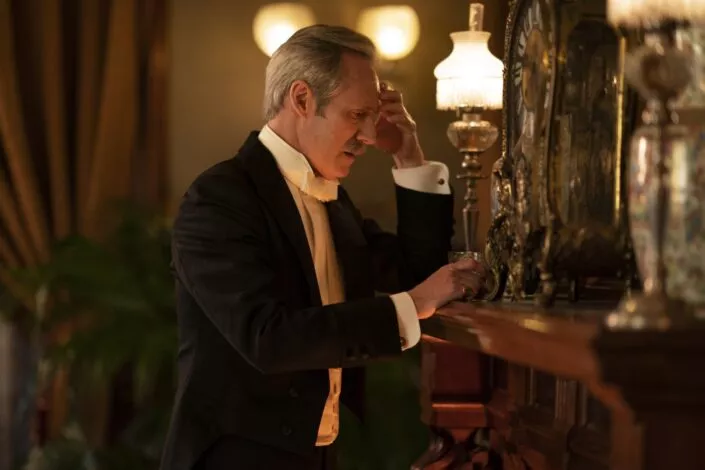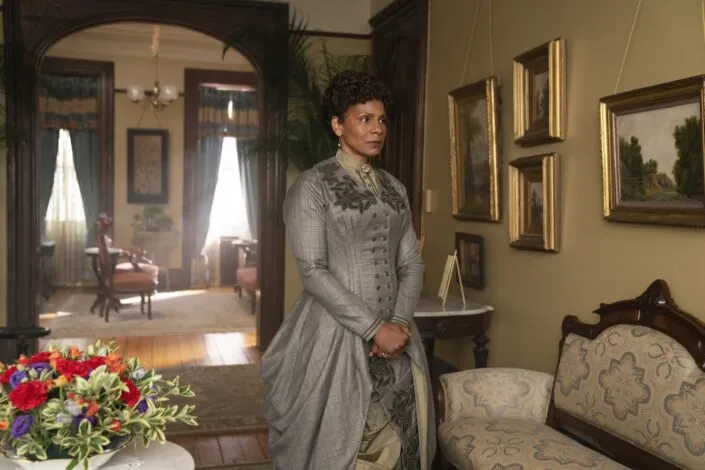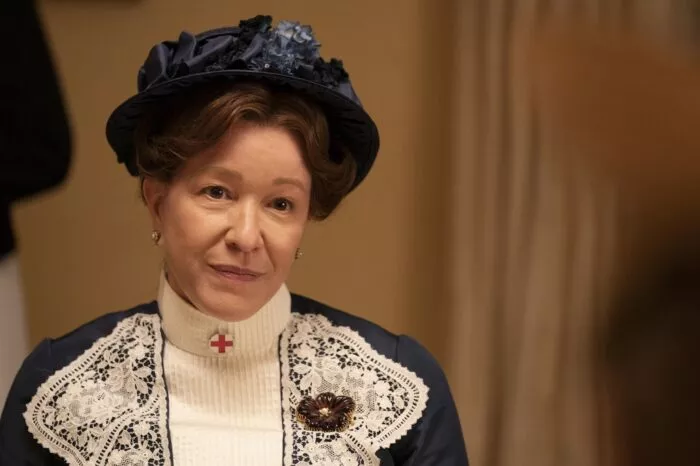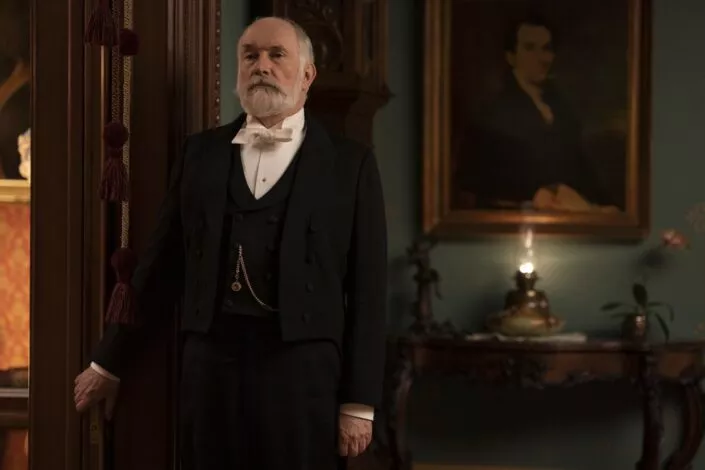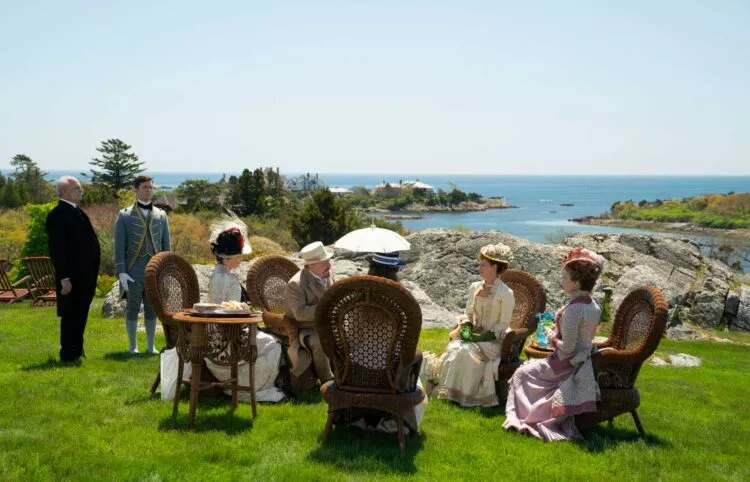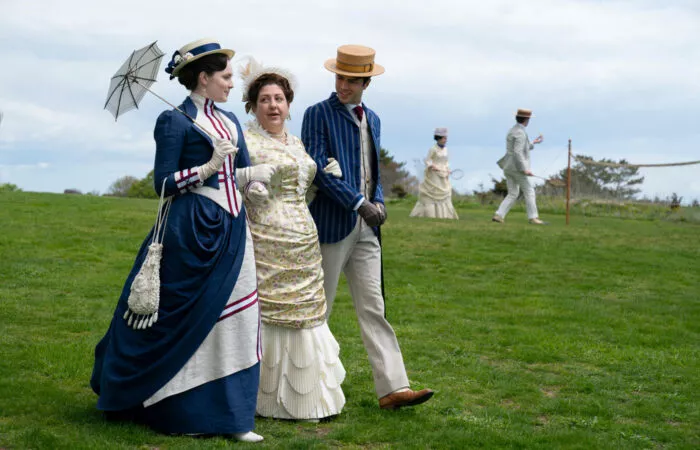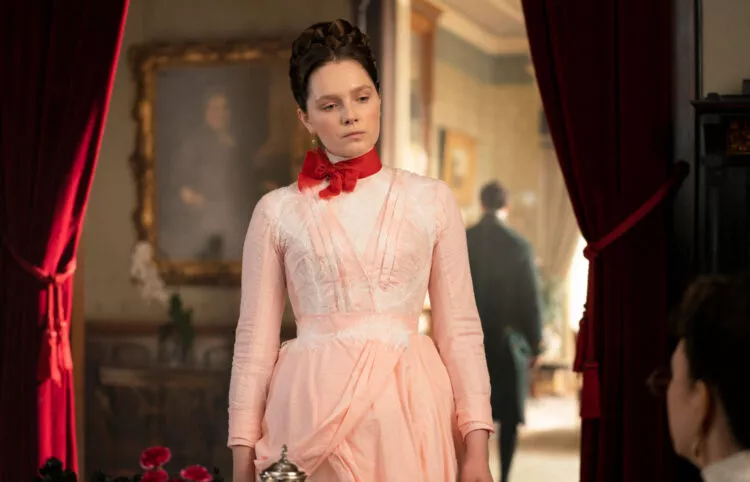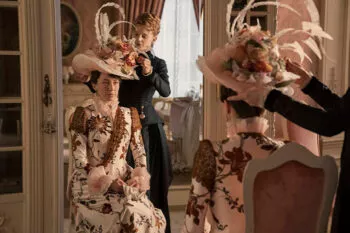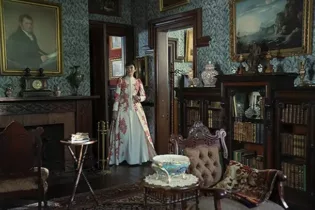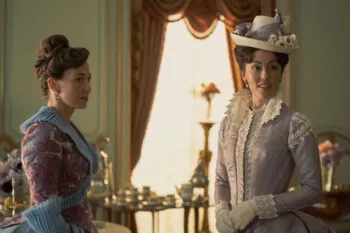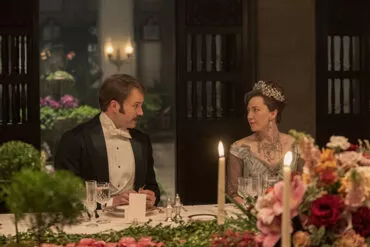Episode 1, “Never the New”
In 1882, Marian arrives at the home of her “old money” aunts Agnes and Ada, whose new neighbors vie to break into New York high society.
In this Episode…
☞ Construction of the Russells’ new mansion on Fifth Avenue involves wooden scaffolding and lots of horse-drawn wagons. No cranes, no trucks or other power equipment. This is how the Gilded Age Newport Mansions were built – very laboriously.
☞ The Northeast Parlor of Hunter House is the office where Marian Brook meets with lawyer Tom Raikes. Hunter House is an 18th-century Georgian house in Newport that the Preservation Society was formed to save in 1945.
☞ Railroads were a fast-growing, highly competitive industry in the Gilded Age.
☞ Marian Brook mentions railroads spreading across the country: “Every day the papers talk of some new millionaire who’s made his fortune in railways.” Mr. Raikes: “And every day the bankruptcy courts see rail companies go under, taking their owners and investors down with them.” At this time, William Henry Vanderbilt was rapidly expanding the family’s railroad empire, and its fortune.

☞ Agnes van Rhijn represents the old leading families of New York “society” who did not welcome the invasion of newly rich people during the Gilded Age – like railroad tycoon George Russell and his wife, Bertha, who are moving into their imposing new mansion across the street from the van Rhijn home.
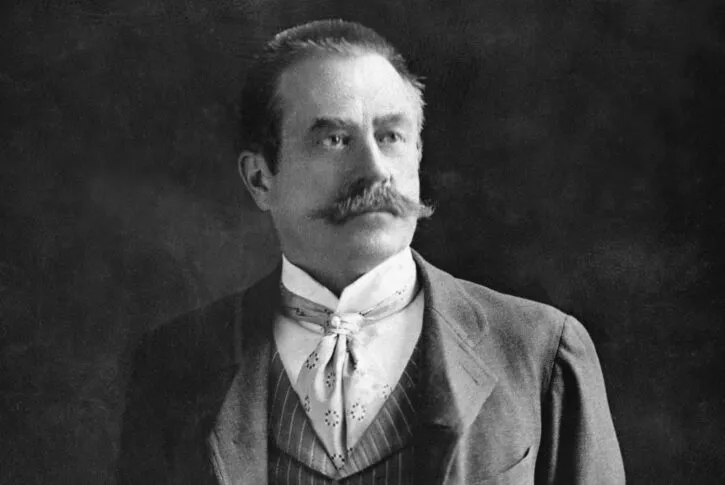
☞ The Russells’ architect is Stanford White, who designed Rosecliff (1902), Tessie Oelrichs’ Gilded Age mansion in Newport, as well as the Newport Casino and Theater (1880). His firm McKim, Mead & White also designed the Kingscote expansion (1881) and Isaac Bell House (1883) around the same time in which “The Gilded Age” is set (1882). White also designed Fifth Avenue mansions for the Vanderbilts and Astors. However, White is portrayed in the show as less than well-established at the time: “How brave,” Mrs. Morris pointedly tells Bertha Russell, “not to go with the same old builders everyone else uses.”
☞ Mrs. Russell leaves calling cards with “Mrs. Stephens, Mrs. Rutherford, Mrs. Jones, Mrs. Vanderbilt, Mrs. Schermerhorn and Mrs. Astor, of course.” Caroline Astor (1830-1908) was the head of New York society for decades during the Gilded Age; to be accepted by her was to be accepted in the highest circles. “We cannot succeed in this town without Mrs. Astor’s approval,” Bertha tells her husband.
☞ The Russells have moved uptown from 30th Street to 61st Street, following the trend among the wealthy. Fifth Avenue and the streets in the 50s and 60s were the new fashionable addresses during the Gilded Age as they were closer to Central Park and farther from industrial development.
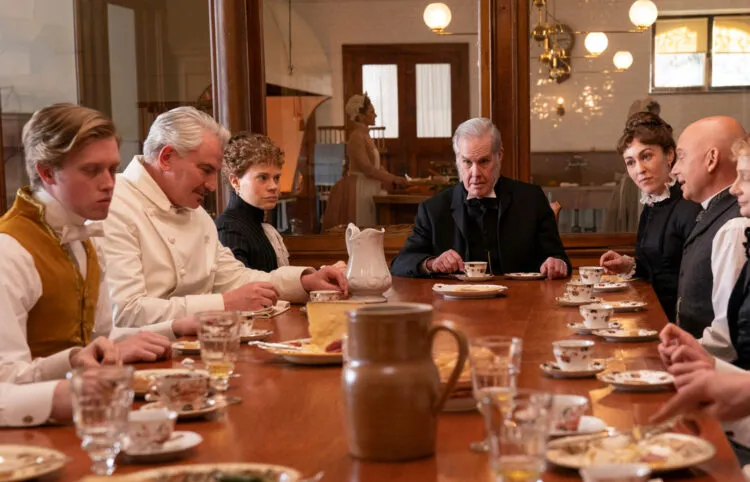
☞ The Elms Kitchen, with its white tiled walls and adjoining spaces, makes its first appearance as the Russells’ kitchen. The Elms was built in 1901, in the later years of the Gilded Age in Newport, for Edward Julius Berwind (1846-1936) and his wife, Sarah “Herminie” (1856-1922). Berwind made his fortune in the coal industry. The Elms Servant Life Tour includes the kitchen areas and other spaces where the household staff worked.
☞ George Russell wants his railroads to have “a clear run from New York to Chicago.” He plans to ruin one remaining competitor by building a rail line alongside his. This is an example of the ruthless tactics used by powerful men of the Gilded Age to squash competition.
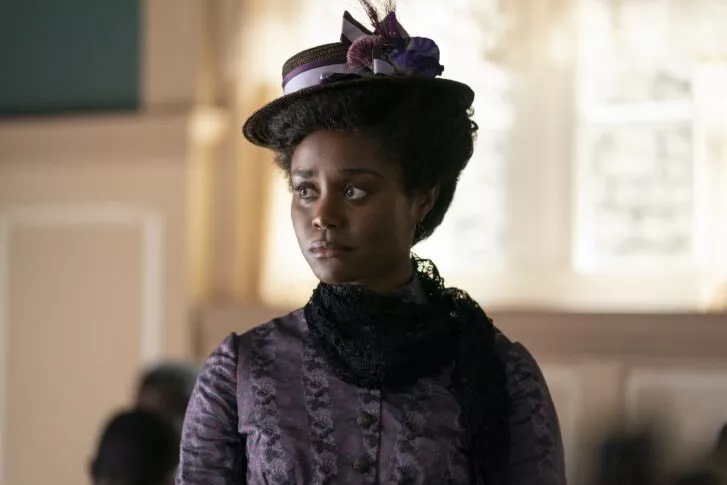
☞ At the rail station in Doylestown, Pennsylvania, Peggy Scott and other African-Americans have to wait outside the train until all the white people have boarded; then they must ride in a segregated car. Segregation of public and private accommodations was common across all of America.
☞ Peggy is welcomed – if a little coolly at first – by Agnes van Rhijn as a guest in her home. Agnes warms to Peggy after learning she was educated at the Institute for Colored Youth, a real school in Philadelphia that Agnes and her sister Ada are familiar with, being from Pennsylvania. However, later in the episode some members of the van Rhijn household staff are hostile to Peggy.
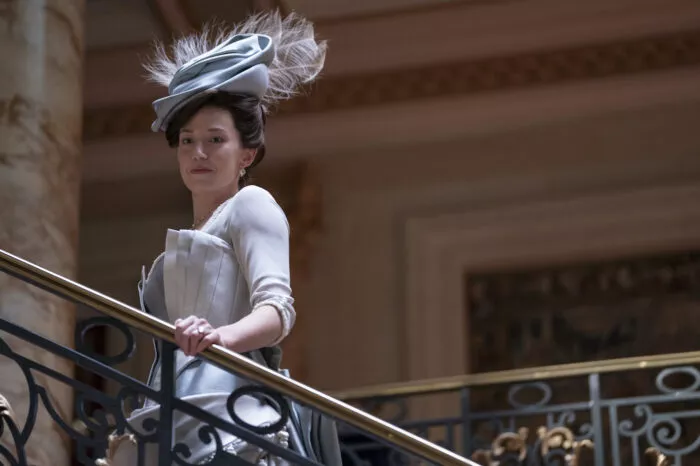
☞ The wrought iron railing of the Russells’ grand staircase has resemblances to those in Marble House and The Elms, two of the great surviving mansions of the Gilded Age in Newport.
☞ Bertha Russell: “You think you’ve finished the gilding, Mr. Kowalski, but nothing is finished til I decide.” Her imperious manner in directing the design and finishing of their new house is reminiscent of Alva Vanderbilt’s firm control over the creation of Marble House.
☞ Bertha Russell is invited to a meeting in support of a charity; this was an expected activity for women of wealth during the Gilded Age.
☞ The first scene in Newport shows The Ledges on Ocean Avenue as Mamie Fish’s house – the white house with front porch and large lawn overlooking the ocean. The younger generation of families such as the Astors and Goelets are staying in Newport, which was a highly fashionable resort in the Gilded Age. The Ledges, built in 1867, was constructed for the Cushing family.
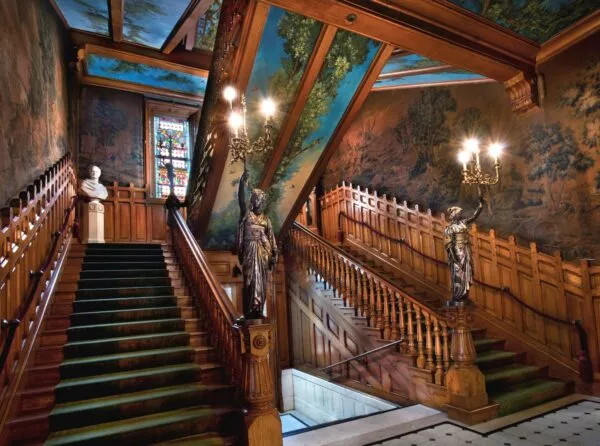
☞ The distinctive stair hall of Chateau-sur-Mer, with the underside of the three-story staircase painted with imagery of the Tree of Life, is shown as Mamie Fish’s New York house, where Bertha Russell calls but is told Mrs. Fish is not home. Chateau-sur-Mer was built in 1852 with later, extensive renovations made by architect Richard Morris Hunt in the 1870s, during the Gilded Age.
☞ For the Russells’ housewarming party, their chef is told to prepare food for 200 guests – and to be ready with more at a moment’s notice. Such lavish entertaining was a hallmark of the Gilded Age wealthy.
☞ Consuelo Vanderbilt’s (1877-1964) bedroom in Marble House, with its rich red fabrics, is George Russell’s bedroom where his valet helps him dress for the party. Consuelo was the daughter of Alva and William K. Vanderbilt and was forced to marry a British aristocrat, the Duke of Marlborough.
☞ Established New York society snubs the nouveau-riche Russells by not attending their housewarming party, leaving Bertha humiliated. It seems the Russells will need more than wealth to gain their place in the upper crust.
